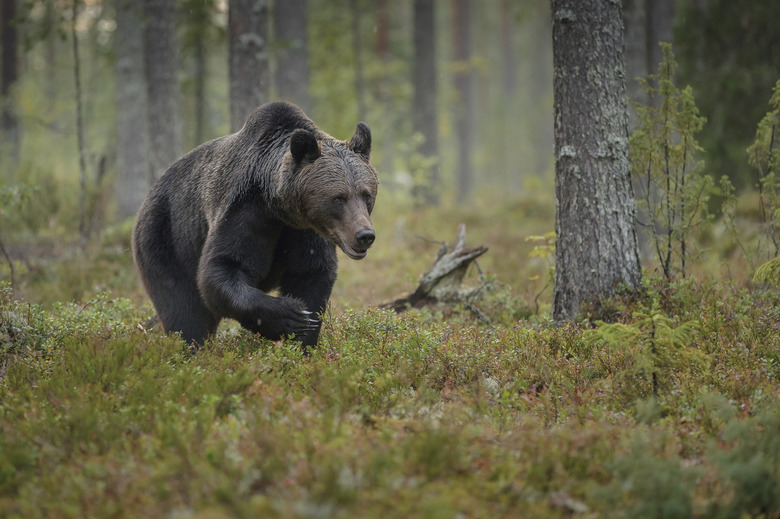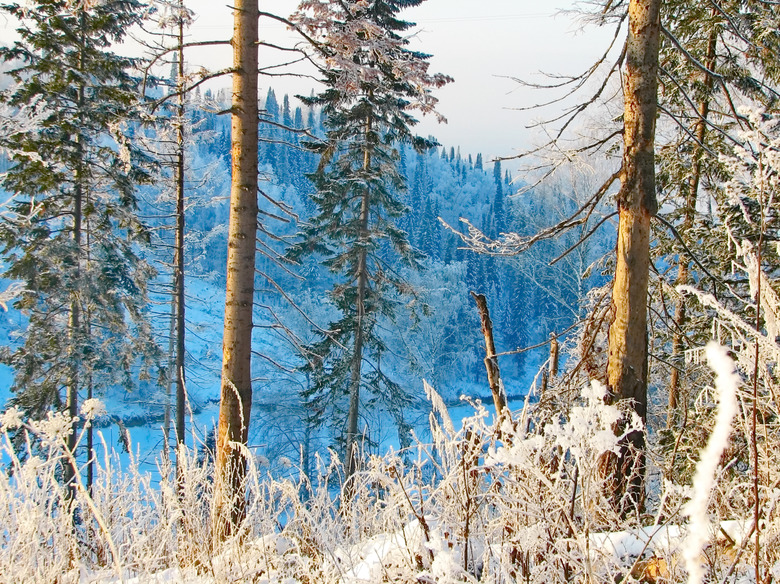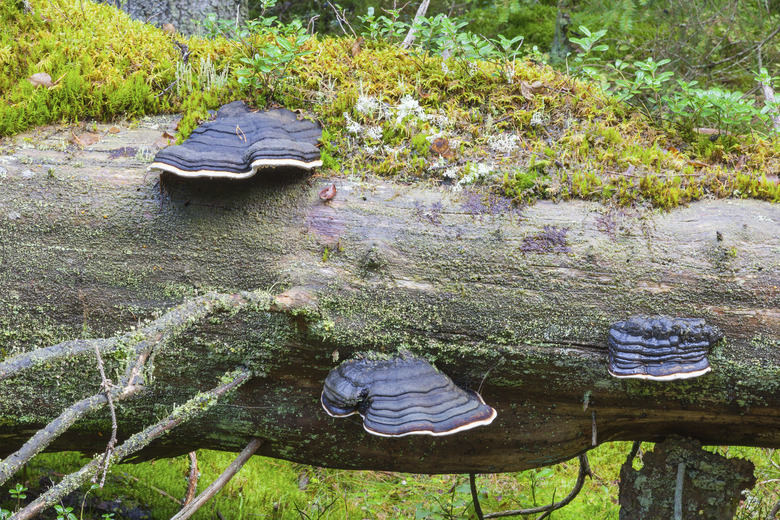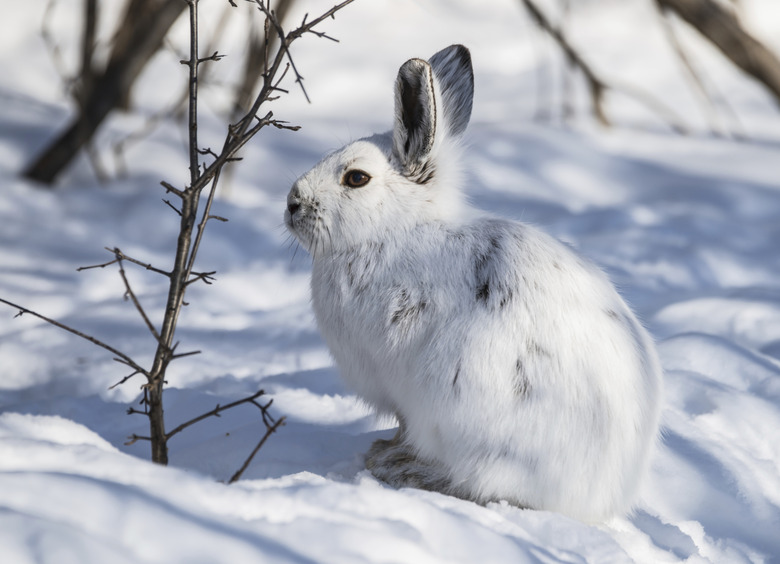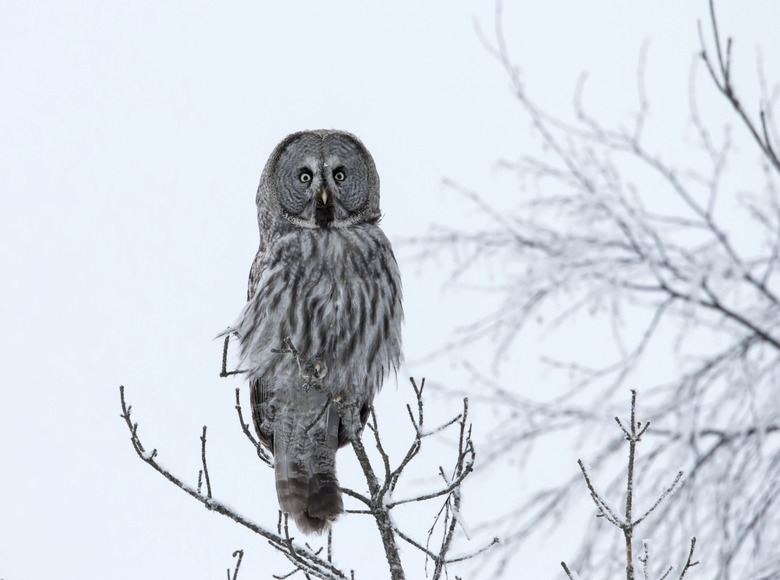Plants & Animals In The Taiga Biome
While the cold, harsh climate of the taiga means that there is less diversity in taiga biome plant and animal life than in more temperate biomes, plants such as conifers and animals such as wolves and caribou have adapted to meet the challenges of the environment. The taiga, or boreal forest, is a wooded biome. It is south of the tundra and stretches through much of Canada and northern Russia, as well as Scandinavia and Alaska.
Coniferous Trees
Coniferous Trees
The wintry climate of the taiga makes it less diverse in plant life than many other biomes. **The predominant taiga biome plants are conifers, trees that have adapted to the cold and have needles instead of leaves.** In fact, the spruce, pine, fir and larch are the most common plant species in the taiga. These trees, with the exception of the larch, are evergreen, meaning they do not shed their leaves in the winter. This allows conifers to avoid wasting energy by regrowing leaves in the spring. In addition, conifers have a cone-like shape that keeps them from collecting heavy snow.
Shrubs, Mosses and Carnivorous Plants
Shrubs, Mosses and Carnivorous Plants
When needles from conifers fall on the forest floor, they decay and produce highly acidic soil. This soil makes it difficult for many taiga biome plants to thrive. However, there are several types of plants in the taiga that make a successful go of it. A few shrubs, such as the blueberry, and deciduous trees — leafy trees that shed their leaves, such as oaks, birches and alders — can be found in warmer and wetter parts of the taiga. Some plants are carnivorous; they eat insects in order to make up for the nutrients lacking in the soil. **However, mosses, fungi and lichens are more common than flowers and undergrowth in heavily forested areas.**
Small and Large Mammals
Small and Large Mammals
The wildlife of the taiga region must endure the harsh conditions of the region. Mammals, with their thick fur, are the most common form of animal life in the taiga. Frequently taiga mammals have white fur, or a white winter coat, in order to blend in with the snowy environment. Many smaller mammals, such as snowshoe hares, otters, ermines, squirrels and moles, can be found in the biome. In addition, a few larger herbivorous animals, such as moose, deer and bison, inhabit the region. Herbivorous animals either eat smaller plant life, such as shrubs, or the seeds from trees. Large predatory mammals, such as bears, lynxes and wolves — and in Russia, the Siberian tiger — prey on the taiga's deer and rodent populations.
Birds of the Taiga
Birds of the Taiga
Most birds that live in the taiga migrate south for the winter in order to avoid the harshest cold of the region. **However, during the summer months, large populations of mosquitoes and other insects provide food for species such as warblers, finches, flycatchers and woodpeckers.** The small mammals of the taiga also provide an excellent food source for predatory birds. Owls and eagles feed off of voles, hares and other rodents native to the region.
Cite This Article
MLA
Zamboni, Jon. "Plants & Animals In The Taiga Biome" sciencing.com, https://www.sciencing.com/plants-animals-taiga-biome-7192476/. 20 July 2018.
APA
Zamboni, Jon. (2018, July 20). Plants & Animals In The Taiga Biome. sciencing.com. Retrieved from https://www.sciencing.com/plants-animals-taiga-biome-7192476/
Chicago
Zamboni, Jon. Plants & Animals In The Taiga Biome last modified March 24, 2022. https://www.sciencing.com/plants-animals-taiga-biome-7192476/
